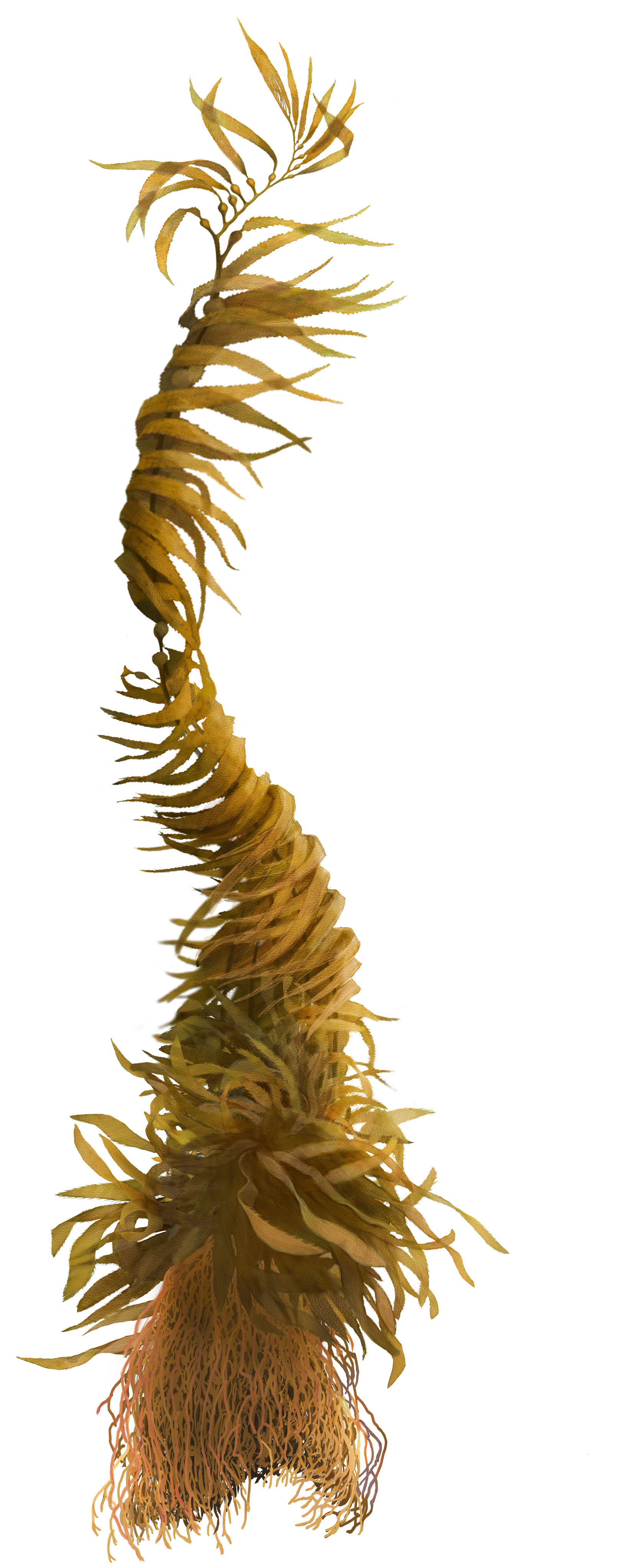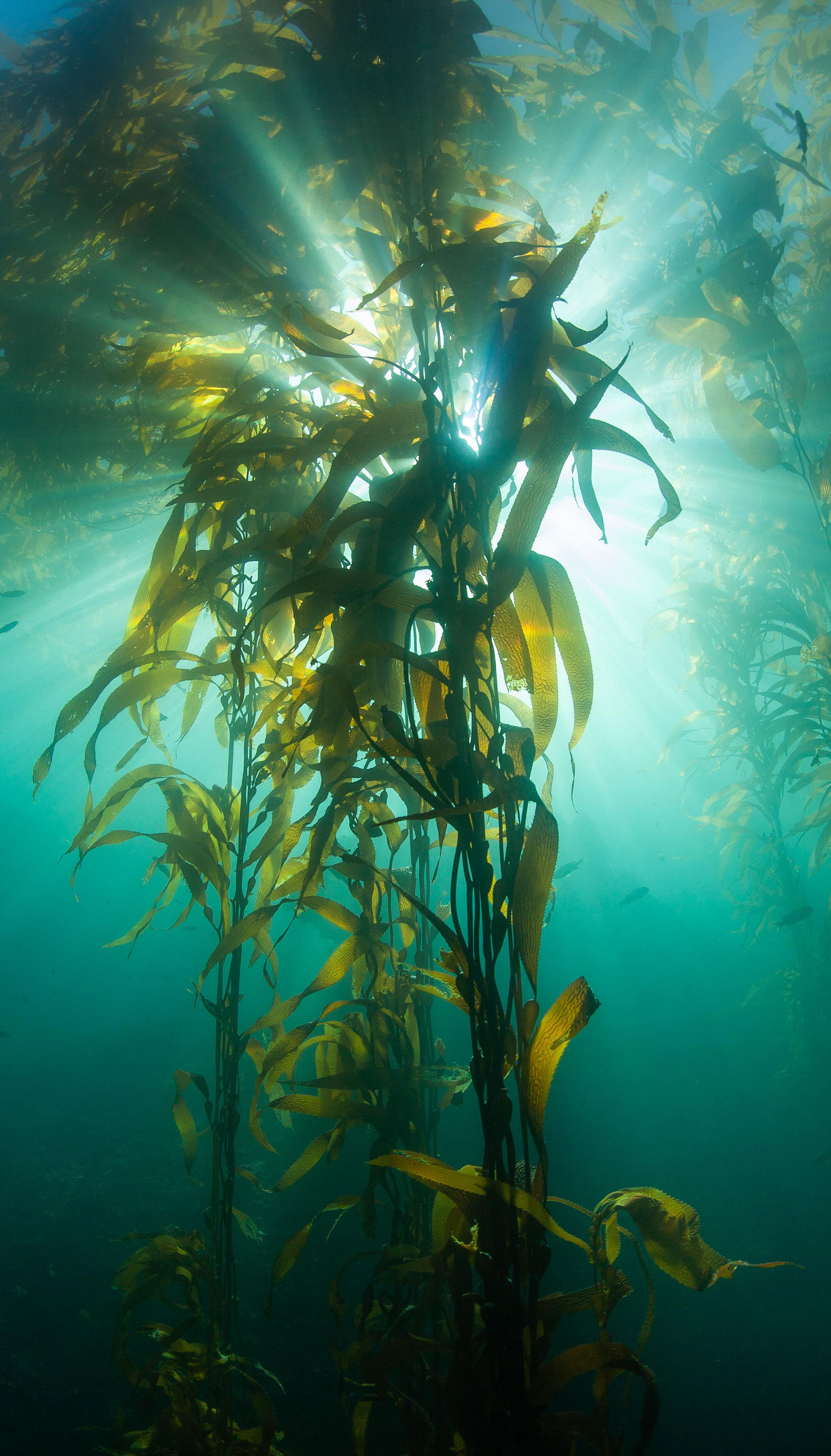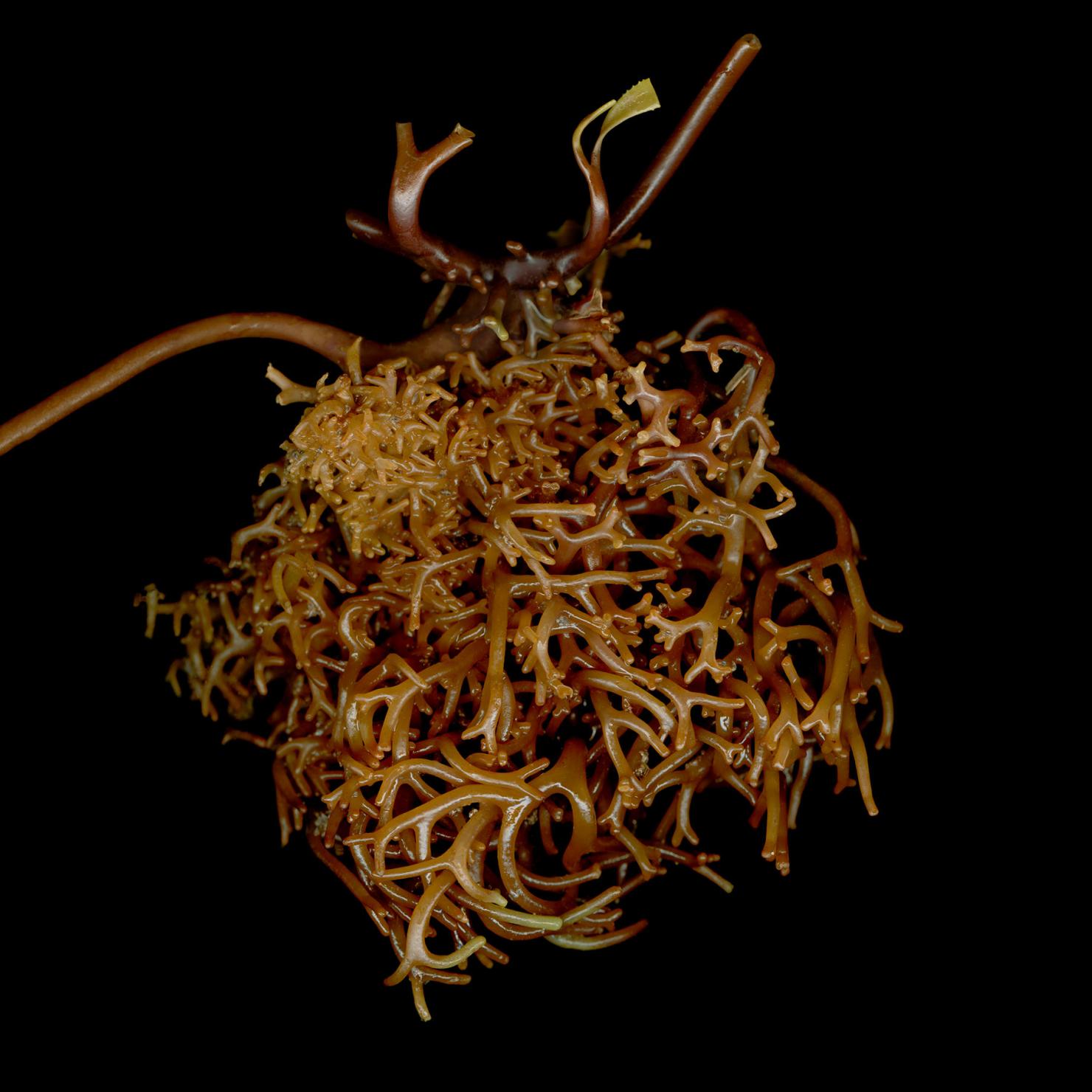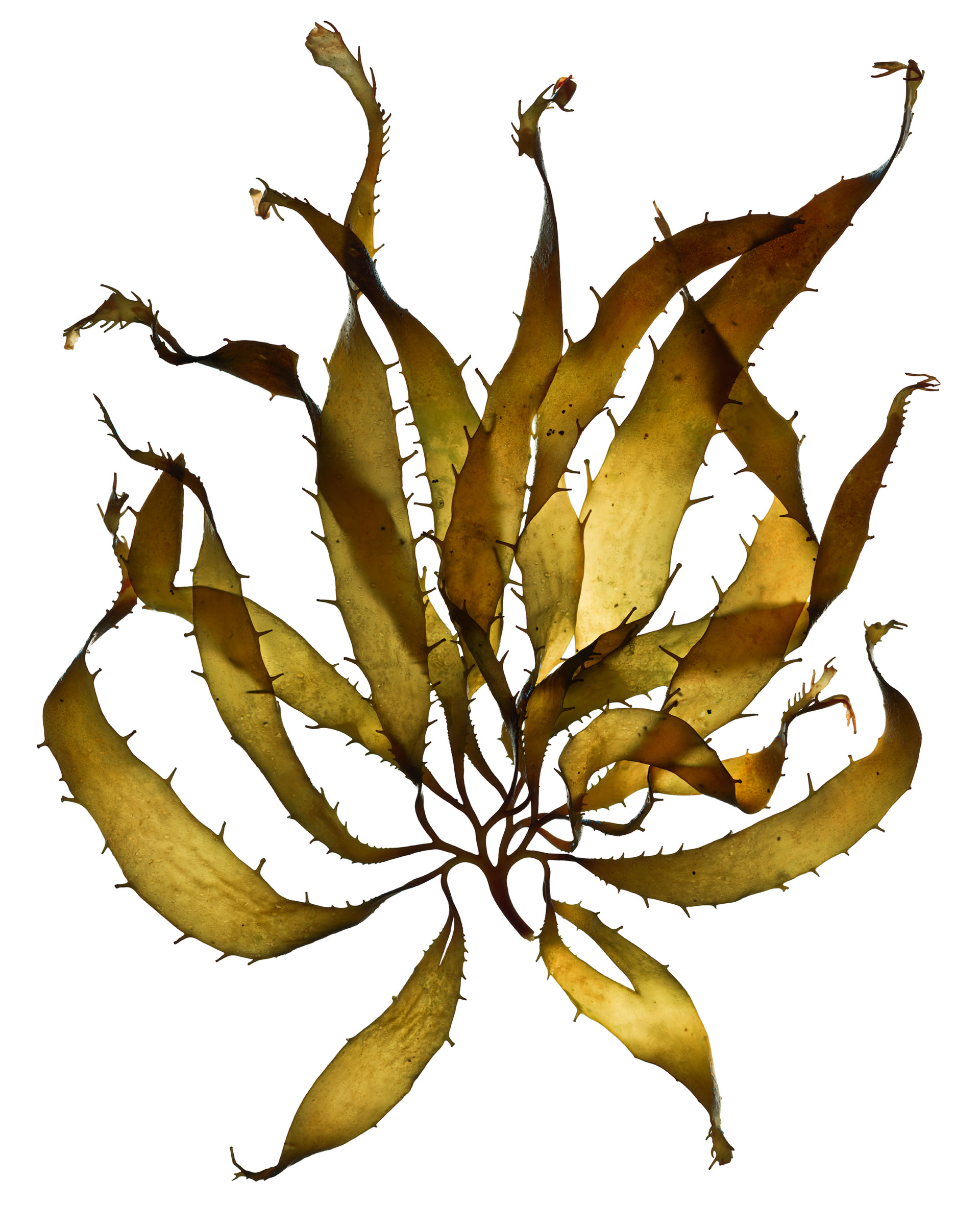Such a Beauty
“Kelp” is not really a scientific term but everyone uses it. For scientists, divers, beachcombers, and coastal wanderers the name refers to the big, fleshy marine algae that tend to be shades of golden or olive brown. Kelps are a subset of the class Phaeophyceae—the brown algae. Some kelps have gas-filled bladders, or pneumatocysts, to keep their bulky thallus afloat. Many of them tend to congregate beyond the surf zone in what has come to be called the kelp forest. Perhaps the most magnificent of these is Macrocystis pyrifera, or giant kelp.
A graphic array of bladders branch continuously off the main stipes of Macrocystis, and each bladder sports a luxuriously corrugated blade. This kelp is the main act of the Monterey Bay Aquarium’s central exhibition for good reason. Its exuberant growth and sheer beauty are breathtaking. It can reach lengths of one hundred feet or more in a single season. Scientists at the Scripps Institute of Oceanography in La Jolla have been studying the historic kelp forests just off the coast from the laboratories for many decades and now it is the Bay Foundation that leads the way with decades of restoration work in the giant kelp habitats of Southern California.









